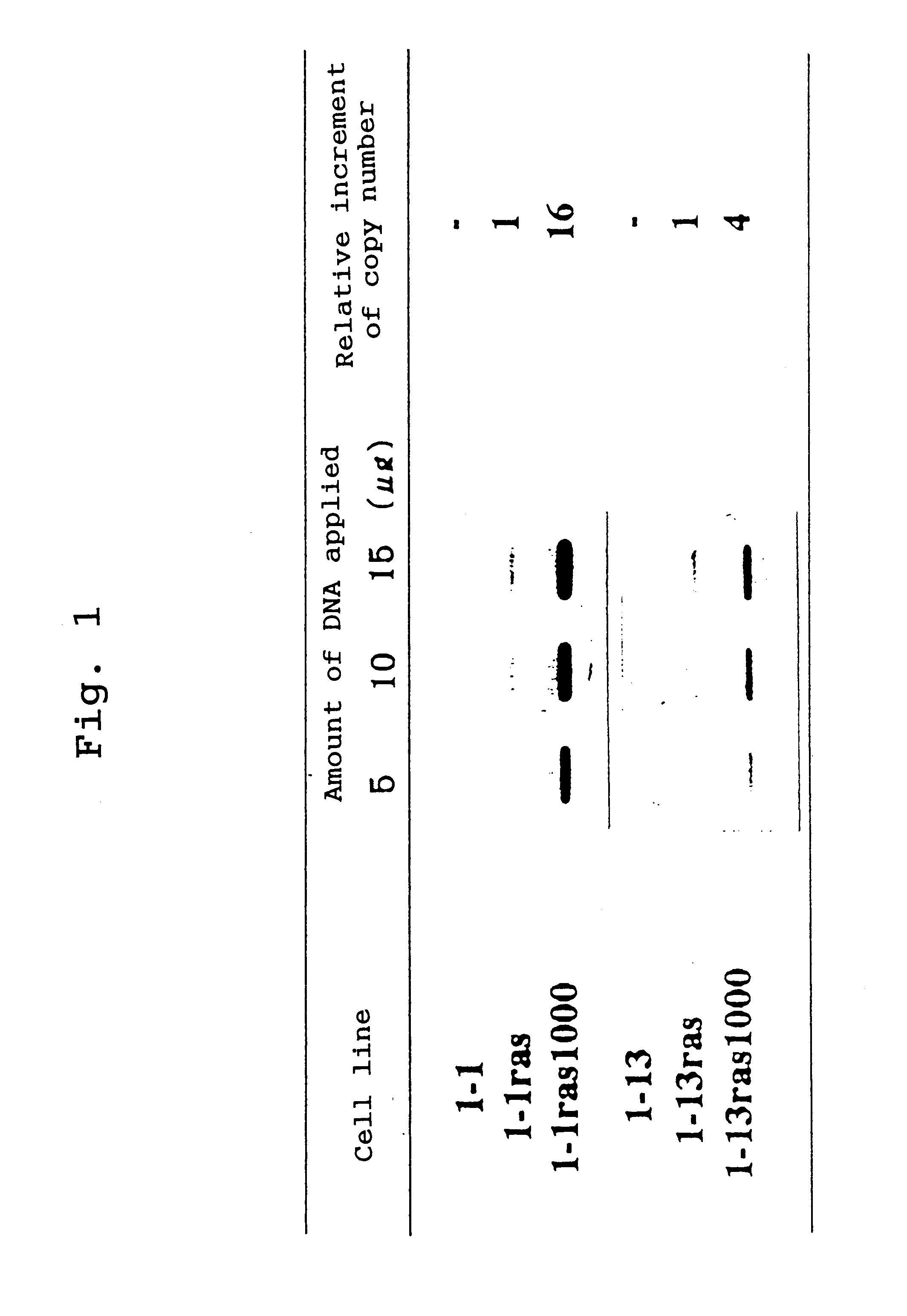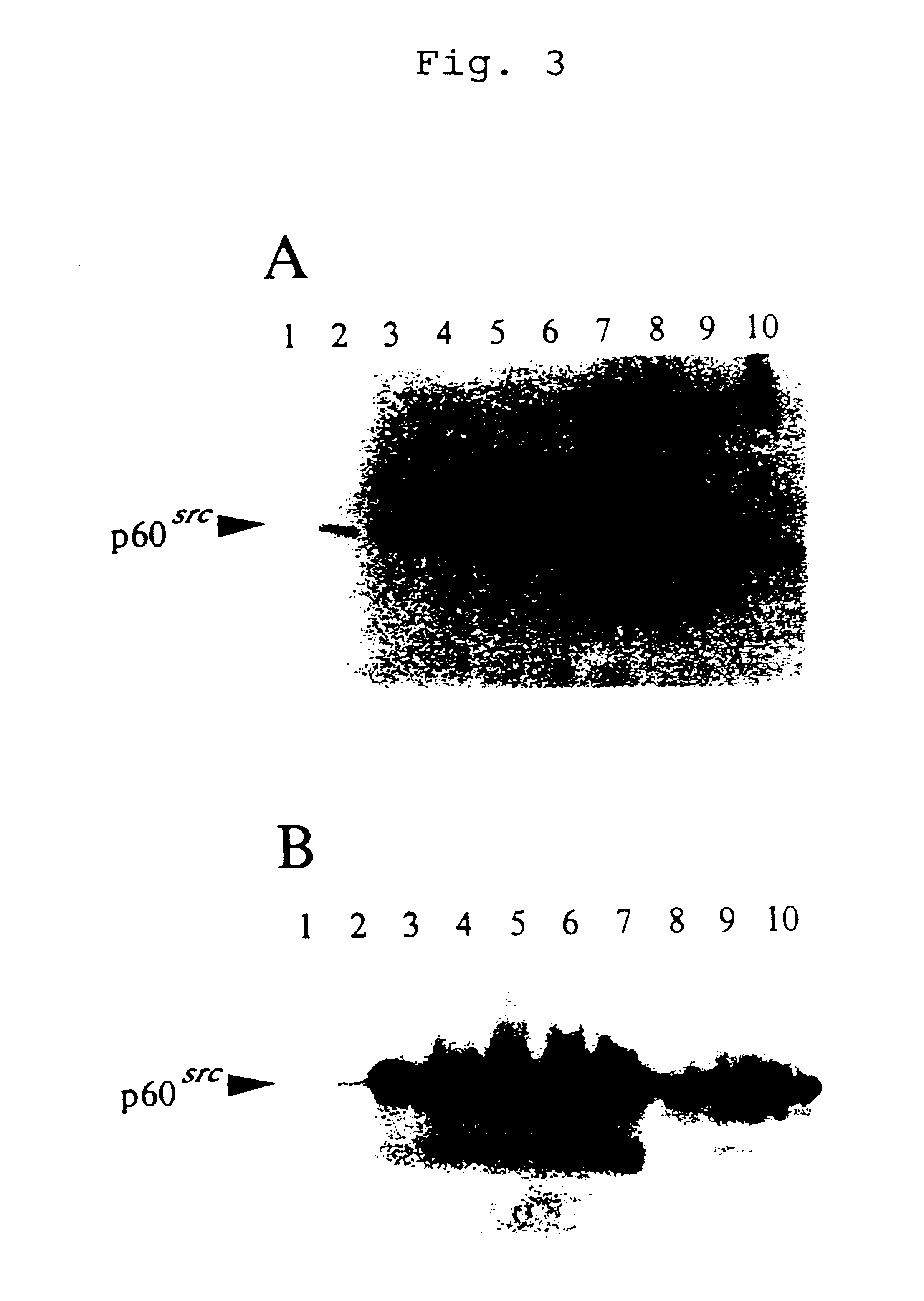Tumor cells having tumorigenic potential but lacking invasive/metastatic potential, method for preparing them and screening method for metastasis-related genes using the same
a tumorigenic and metastatic technology, applied in the field of tumor cells with tumorigenic potential but lacking invasive/metastatic potential, can solve the problems of limited information about biochemical basis, difficult to treat such effects, and death of cancer patients
- Summary
- Abstract
- Description
- Claims
- Application Information
AI Technical Summary
Benefits of technology
Problems solved by technology
Method used
Image
Examples
example 1
Transformation of BALB / c 3T3 A31 Variant Cells
BALB / c 3T3 A31 variant cells established by Kakunaga, clone 1-1 (hereinafter sometimes referred to as A31-1-1) and clone 1-13 (hereinafter sometimes referred to as A31-1-13), were examined for their susceptibility to in vitro transformation induced by UV-irradiation, MCA-exposure and Ki-MSV carrying the v-Ki-ras oncogene as described above.
Focus-Forming Ability of Transformants
A31-1-13 was more susceptible to the chemically and physically induced neoplastic transformation than A31-1-1, as previously reported (Tatsuka M. et al., supra. 1992). Both clones showed similar susceptibility to the Ki-MSV-induced transformation, as previously reported (Kakunaga T., supra. 1984). Morphology of the foci differed between both clones but not with the carcinogens for the induced transformation. The foci were larger and more aggressive in A31-1-13 than in A31-1-1.
Tumorigenicity and Invasive or Metastatic Potential of Transformants
All the transformants ...
example 2
Transfer of the Activated c-Ha-ras Oncogene into BALB / c 3T3 A31 Variant Cells
To isolate cells expressing an activated Ras oncoprotein at a high level, A31-1-1 and A31-1-13 were transformed by introducing a plasmid containing the activated c-Ha-ras (derived from T24 bladder carcinoma cells) and a selectable marker neo (pSV2neo-ras). Transformation was performed by electroporation (Tatsuka M., et al., Exp. Cell Res. 178:154-162, 1988). The transformants were selected in the presence of 400 and 1000 .mu.g / ml of G418. Two clones, 1-1 ras and 1-13 ras, were isolated in the presence of 400 .mu.g / ml of G418 and other two clones, 1-1ras1000 and 1-13ras1000, were isolated in the presence of 1000 .mu.g / ml of G418. All the isolated clones had similar properties to those shown by cells transformed with v-Ki-ras. These cells were used for the following experiments.
Southern Blot Analysis of Incorporated Gene
Genomic DNA from each ras-transformed cell was digested with the restriction enzyme SacI a...
example 3
Invasive or Metastatic Potential of BALB / c 3T3 Variant Cells can be Induced by a Viral Oncogene v-src
A viral oncogene, v-src, has a strong transforming activity and can induce invasive / metastatic potential simultaneously, depending on the type of the recipient cell. Thus, the effect of v-Src oncoprotein on the parental BALB / c 3T3 A31 variant cells as well as on the ras-transformed cells was examined by the transfection with this oncogene.
Upon transfection with v-src, the parental cells (BALB / c 3T3 A31 cells) formed foci in vitro, indicating that the v-src gene itself has the activity of transforming cells. The shape of the focus-forming transformed parental cells was not so different from that of the cells transformed with the mutated ras gene.
Then, the transformants were confirmed to contain the transfected v-src gene as a 2.9-kb EcoRI fragment by Southern blotting and a functional expression of v-Src oncoprotein was also confirmed as follows.
Immunoblotting Analysis and Tyrosine Ki...
PUM
| Property | Measurement | Unit |
|---|---|---|
| concentration | aaaaa | aaaaa |
| diameter | aaaaa | aaaaa |
| electrophoretic photographs | aaaaa | aaaaa |
Abstract
Description
Claims
Application Information
 Login to View More
Login to View More - R&D
- Intellectual Property
- Life Sciences
- Materials
- Tech Scout
- Unparalleled Data Quality
- Higher Quality Content
- 60% Fewer Hallucinations
Browse by: Latest US Patents, China's latest patents, Technical Efficacy Thesaurus, Application Domain, Technology Topic, Popular Technical Reports.
© 2025 PatSnap. All rights reserved.Legal|Privacy policy|Modern Slavery Act Transparency Statement|Sitemap|About US| Contact US: help@patsnap.com



